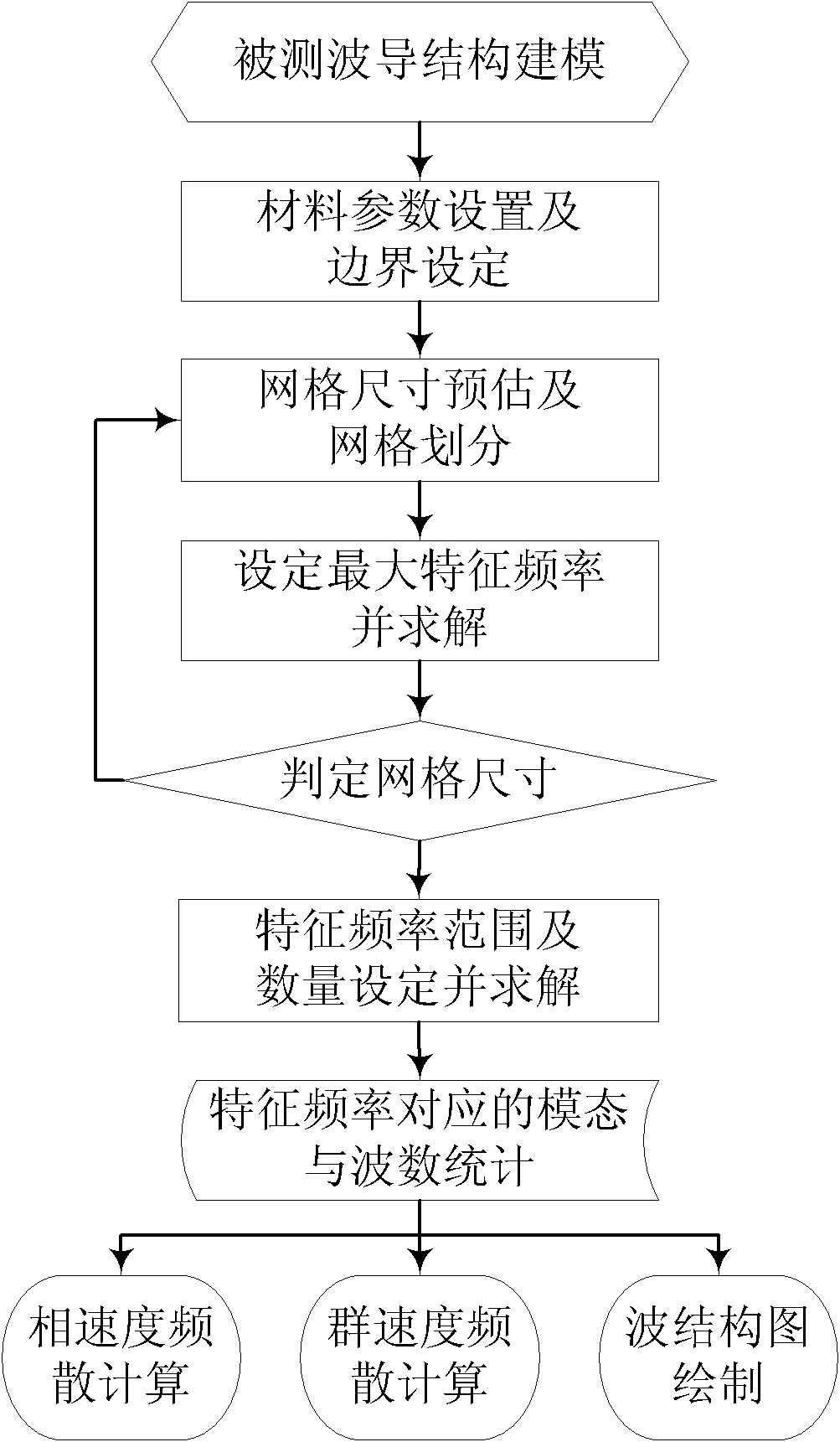Method for calculating ultrasonic guided wave frequency dispersion relationship based on characteristic frequency method
A technology of characteristic frequency and ultrasonic guided wave, which is applied in calculation, special data processing applications, instruments, etc., can solve the problems that the dispersion equation cannot be theoretically obtained, and the dispersion relationship cannot be calculated, and achieve the effect of simple and practical calculation of the dispersion relationship
- Summary
- Abstract
- Description
- Claims
- Application Information
AI Technical Summary
Problems solved by technology
Method used
Image
Examples
Embodiment Construction
[0024] In conjunction with the content of the method of the present invention, an example of the calculation method of the guided wave dispersion relationship in the following plate is provided, and compared with the theoretical solution, the specific steps are as follows figure 1 Shown:
[0025] 1) Since the length and width of the plate structure are far greater than the thickness, when the guided wave propagates in the length direction, the influence of the width on it can be ignored, so it is simplified to a two-dimensional plane strain model, and the multiphysics field coupling software COMSOL Multiphysics 3.5a is selected The structural mechanics module in the analysis. Set the model length to 200mm, thickness to 4mm, Young's modulus E=207GPa, Poisson's ratio ν=0.296, density ρ=7800kg / m 3 ; The boundary conditions set the upper and lower bottom surfaces as free constraints, the left end surface as predetermined displacement constraints, and the right end surface as symm...
PUM
 Login to View More
Login to View More Abstract
Description
Claims
Application Information
 Login to View More
Login to View More - R&D
- Intellectual Property
- Life Sciences
- Materials
- Tech Scout
- Unparalleled Data Quality
- Higher Quality Content
- 60% Fewer Hallucinations
Browse by: Latest US Patents, China's latest patents, Technical Efficacy Thesaurus, Application Domain, Technology Topic, Popular Technical Reports.
© 2025 PatSnap. All rights reserved.Legal|Privacy policy|Modern Slavery Act Transparency Statement|Sitemap|About US| Contact US: help@patsnap.com



